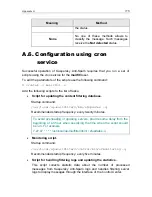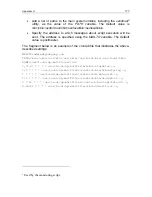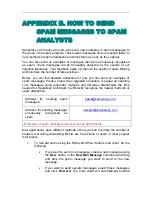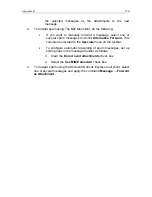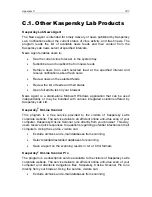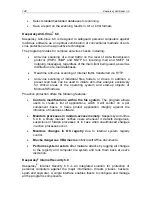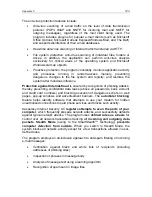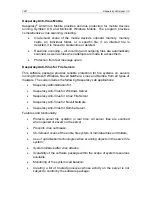
Appendix A
109
•
–q
– enables “silent” mode, when only error messages and warning are
output to the screen;
•
–d
– displays a detailed report about the operations performed by the
utility;
•
–v
– instruction to provide more verbose information in the messages
output to the console in comparison with the default level;
•
–V <details_level>
– instruction to use the specified level of details for
the messages output to the console. Possible values:
1
...
10
;
•
–l
– instruction to use higher level of details for messages added to
system log in comparison with the default level;
•
–L <details_level>
– instruction to use the specified level of details for
the messages added to system log. Possible values:
1
...
10
;
•
–c <configuration_file>
redefines the path to the
filter.conf
configuration file
. If filter.conf
is located in a directory other than the
default, specify a complete path to the
filter.conf
file as a value for the
configuration_file
parameter;
•
–k
<kas-conf_script>
– redefines the path to the
kas-conf
script, which
reads Kaspersky Anti-Spam configuration. If
kas-conf
is located in a
directory other than the default, specify a complete path to the
kas-conf
file as a value for the
kas-conf_script
parameter;
•
–h
– outputs to the console information about the utility.
When this utility is started without specifying command line options, this is
similar to starting the utility with the
–f
option.
A.4.6. mkprofiles
The
mkprofiles
utility is used to build and compile Kaspersky Anti-Spam filtering
policies.
Startup line:
# /usr/local/ap-mailfilter3/bin/mkprofiles \
[-c <configuration_file>] [-l <log_file>] [-q] [-v] [-h]
where:
•
–c <configuration_file>
– redefines the path to the
filter.conf
configuration file
. If filter.conf
is located in a directory other than the
default, specify a complete path to the
filter.conf
file as a value for the
configuration_file
parameter.





















